Voor de liefhebbers! Het eerste hoofdstuk van het nieuwe boek van Geert Wilders, “Marked for Death”.
Marked for death Islam’s War Against the West and Me
(Geert Wilders)
Copyright © 2012 by Geert Wilders
All rights reserved. No part of this publication may be reproduced or transmitted in any form or by any means electronic or mechanical, including photocopy, recording, or any information storage and retrieval system now known or to be invented, without permission in writing from the publisher, except by a reviewer who wishes to quote brief passages in connection with a review written for inclusion in a magazine, newspaper, broadcast, or on a website.
Cataloging-in-Publication data on file with the Library of Congress
ISBN 978-1-59698-796-8
Published in the United States by
Regnery Publishing, Inc.
One Massachusetts Avenue NW
Washington, DC 20001
Manufactured in the United States of America
10 9 8 7 6 5 4 3 2 1
Books are available in quantity for promotional or premium use. Write to Director of Special Sales, Regnery Publishing, Inc., One Massachusetts Avenue NW, Washington, DC 20001, for information on discounts and terms or call (202) 216-0600.
Distributed to the trade by
Perseus Distribution
387 Park Avenue South
New York, NY 10016
Chapter One
The Axe Versus the Pen
“The future doesn’t belong to the fainthearted”—Ronald Reagan
On January 1, 2010, at 10:00 p.m., a 74-year-old man fled from his living room. As fast as he could move with his cane, he made for the bathroom and locked himself inside. Then there was a terrible banging on the bathroom door, the clang of steel on steel. Screams for “Blood!” and “Revenge!” rang out as someone hacked at the door with an axe, trying to force himself in, seeking to chop the old man to pieces.
The scene took place in a modest bungalow in Viby, a middle-class suburb of Aarhus, Denmark’s second largest city. One observer compared the attack to the famous scene from Stanley Kubrick’s 1980 horror movie The Shining in which Jack Torrance, played by Jack Nicholson, mania- cally chops his way through a bathroom door with an axe in an attempt to murder his wife.
The old man is Kurt Westergaard. I met him once. He is a tall, softspoken grandfather with a grey beard, invariably dressed in bright red pants, a black shirt, and a flowing red scarf. When he goes out, he wears a black Stetson hat. “Black and red are the colors of anarchism,” he says.
He is an artist who prefers to paint landscapes, but prior to his retirement he made a living by drawing cartoons for Jyllands-Posten (the Jutland Post), a local newspaper in Aarhus.
In September 2005, Westergaard’s paper asked him, among other artists, to draw a cartoon of the Islamic prophet Muhammad. His editors planned to publish the drawings to address a growing trend of self-censorship in Europe on the topic of Islam. They were particularly bothered by an incident in which several artists refused to illustrate a children’s book on Muhammad, and the artist who finally agreed to do it insisted on anonymity. Westergaard accepted the paper’s request and recycled an idea he had drawn up twenty years earlier—an image of a fierce- looking terrorist with a bomb tucked in his turban.
Westergaard’s cartoon has become an iconic image of our age, turning the kindhearted artist into “the most hated man in Mecca.” His simple drawing, published in an obscure Danish newspaper, sparked riots and attacks on Danish embassies and properties throughout the Islamic world, resulting in over 130 deaths. The reverberations reached Britain and America, where many media outlets refused to show the cartoons even as they reported on the controversy; this included the esteemed Yale University Press, which banned a book on the cartoon riots from repro-ducing the cartoons themselves or any other images of Muhammad.
And the cartoon led to the nightmare in Viby, where Muhudiin M. Geele, a 28-year-old Somali Muslim immigrant, turned up at Wester- gaard’s house with an axe and a butcher’s knife on New Year’s Day 2010. Luckily, due to the many death threats Westergaard had already received from Islamic extremists, along with a previous plot to murder him that resulted in three arrests, the Danish authorities had fortified the Wester- gaard home, installing bulletproof glass and surveillance cameras, rein-forcing the front door, and crucially, transforming the family bathroom into a panic room with a steel door and an emergency button to contact the Viby police station. Westergaard was sitting in his living room when Geele, who had broken into the garden, began to smash his way through the glass door to the living room. The door, made of reinforced bulletproof glass, even-tually gave way, but Westergaard had time to lock himself in the bathroom. From there he alerted the police, who arrived three minutes later. Meanwhile, the young Somali, screaming with rage, was smashing at the steel bathroom door with his axe. When the police arrived, Geele attacked an officer with his axe before other policemen shot him in the knee and shoulder. If the attack on Westergaard had happened later in the evening when the cartoonist was asleep, he might not have managed his narrow escape. “It was close, really close,” he told a journalist.
Since he drew his Muhammad cartoon, Westergaard has endured what he calls “an existence full of fear.” In September 2011, he had to cut short a visit to Norway after police arrested yet another person suspected of plotting to assassinate him.7 Time has clearly not healed the “wounds” felt by fanatical Muslims, who want Westergaard dead for offending them with a cartoon that tells a truth they do not want to hear. His drawing, the artist explained at Princeton University in October 2009, “was an attempt to expose those fanatics who have justified a great number of bombings, murders and other atrocities with references to the sayings of theirprophet. If many Muslims thought that their religion did not condone such acts, they might have stood up and declared that the men of violence had misrepresented the true meaning of Islam. Very few of them did so.”
The Islamic reaction to Geele’s attempt to kill Westergaard proved his point. So-called “radical” Muslims such as the aptly named Ali Mohamud Rage, spokesman of al-Shabab, the Somali Islamic group with which Viby’s axe-wielding zealot sympathized, congratulated the would- be assassin. Though Rage denied that Geele belonged to the group, he declared, “We welcome the brave action he did. It was a good and brave step taken by that Somali man against the criminal cartoonist—we liked it.”
Equally worrisome was the response from so-called “moderate” Muslims, such as the editorial staff of Gulf News, an English-language newspaper based in the United Arab Emirates. In a short editorial, the paper blamed the assassination attempt on Westergaard himself, morally equating Westergaard’s actions with Geele’s. “There is no doubt that the cartoon was deeply offensive to all Muslims,” the paper wrote. “For his work Westergaard is regarded with the greatest possible contempt by all who believe in the true faith of Islam. Targeting him, however, is descending to the level of a contemptuous and despicable man. This revenge attack merely again serves to highlight the insult wrought by Danish newspapers, stoking the embers of insult with the oxygen of hatred. Westergaard and his ilk are better forgotten.”
Thus, the Gulf News, widely hailed for its supposed “moderation,” criticized the would-be assassin not for attempting to kill Westergaard, but for having “descended to the level” of this “contemptuous and despicable man.” Obviously, even some so-called “moderate” Muslims fail to see there is a world of difference between drawing a cartoon and trying to hack a human being to pieces.
There is no better metaphor to illustrate the difference between Western values and the “true faith of Islam” than the difference between a pen and an axe. We settle our arguments with the former; Islam uses the latter. It is a frightening metaphor in some ways, indicating that when we are attacked with axes, we only have pens with which to defend ourselves.
Unlike Kurt Westergaard, I was never chased around my home by an axe-wielding Islamic fanatic. However, I do live with this kind of threat every day, which is why, like Westergaard, I have a panic room in my house, where I am supposed to take refuge if one of the adherents of the “religion of peace” makes it past my permanent security detail and into my home. In fact, it’s not really my home at all—I live in a government safe house, heavily protected and bulletproof. Since November 2004, when a Muslim murdered Dutch filmmaker Theo van Gogh for the crime of offending Islam, I have been surrounded by police guards and stripped of nearly all personal privacy. I am driven every day from the safe house to my office in the Dutch Parliament building in armored police cars with sirens and flashing blue lights. I wear a bulletproof jacket when I speak in public. Always surrounded by plainclothes police officers, I have not walked the streets on my own in more than seven years. When I occasionally go to a restaurant, security has to thoroughly check the place in advance. When I go to a movie theater, the last rows of seats are cleared for me and my guards. We come in after the movie has begun and leave before it ends—the last time I saw the beginning or the end of a movie in a Dutch theater, George W. Bush was still serving his first term as U.S. president.
Why do I need this protection? I am not a president or a king; I am a mere member of the Dutch Parliament, one of 150 elected parliamentarians in the Tweede Kamer, the House of Representatives of the Netherlands, a small country of 16.5 million in Western Europe. However, I have joined Westergaard in a rapidly growing group of individuals throughout the world who have been marked for death for criticizing Islam. For asserting our rights to say what we really think about this political ideology that disguises itself as a religion, we have been hounded by Muslims seeking to make an example of us. Offend us, they are saying to the world, and you will end up in hiding like Wilders, attacked like Westergaard, or dead like van Gogh.
Free men and women everywhere must resist this violent intimidation at all costs. Armed only with our pens, we must defy Islam’s axes and knives. We must continue to speak our minds, knowing there is nothing more powerful than the truth. This is why we write our books and speeches, draw our cartoons, and make our movies and documentaries. The truth will set us free. That is what we really believe.
There is an old Biblical expression, “An eye for an eye.” The acceptance of this archaic law, dating back to the days of Abraham, was the first step that lifted mankind out of its barbarian state, because it restricted the extent of revenge and retribution to an equitable punishment. Though some pretend that Islam is an Abrahamic faith like Judaism and Christianity, Islam does not restrict revenge and retribution. It does not retaliate against a cartoon with another cartoon; it demands a head for a cartoon—a head for every drawing, book, speech, or movie that it deems to be “insulting.”
In many countries—in Islamic nations, of course, but increasingly in the West as well—cartoonists, writers, bloggers, and elected officials such as myself have been prosecuted for the crime of insulting Muslims or Islam. In court, our only defense once again is the pen—expressing the truth as we honestly see it. Yet we are constantly confronted by those who want to rob us even of that weapon. They want to break our pens and force us into silence. Some say that critics of Islam like myself should keep quiet because we are just as bad and just as dangerous as the axewielding barbarians who invade our homes.
We will not be picking up axes and breaking into people’s homes. But we will not remain silent either. Moderation in the face of evil is not what our age needs. As Ronald Reagan declared, “Thefuture doesn’t belong to the fainthearted.”
We must uncap our pens; we must speak words of truth. We are facing a determined enemy who is striving through all means to destroy the West and snuff out our traditions of free thought, free speech, and freedom of religion. Make no mistake: if we fail, we will be enslaved.
We must not let the violent fanatics dictate what we draw, what we say, and what we read. We must rebel against their suffocating rules and thuggish demands at every turn. You can help the fight just by reading this book, which explains the many ways in which Islam has marked for death not just me, but all of Western civilization.
We must, in the words of Revolutionary War veteran General John Stark, “Live free or die.”
Geplaatst door:
E.J. Bron (www.ejbron.wordpress.com)
Met dank aan Snaphanen (www.snaphanen.dk)



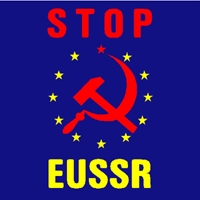












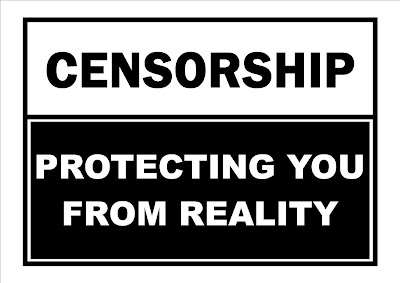


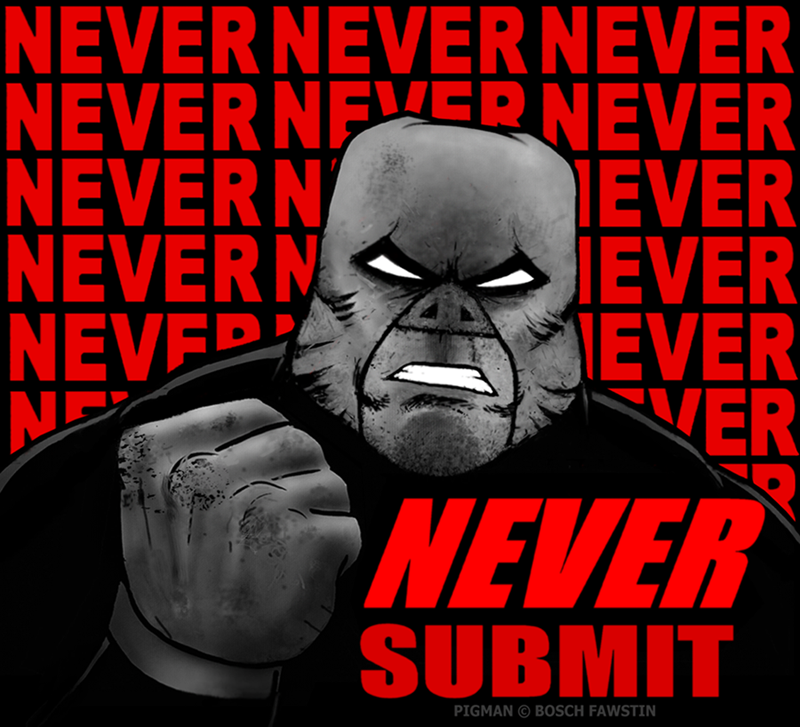


















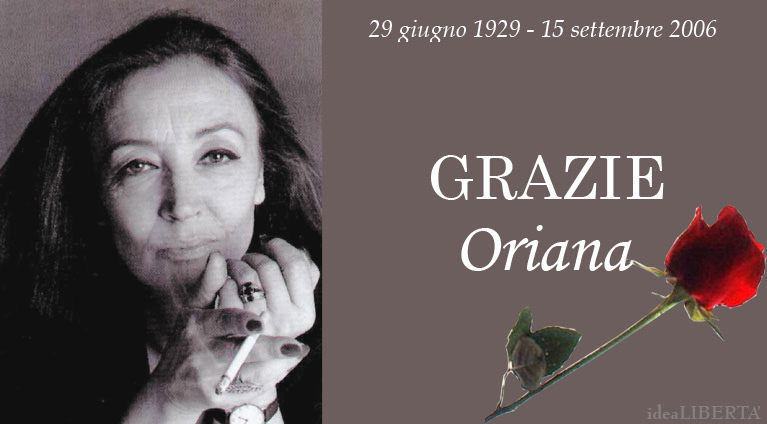






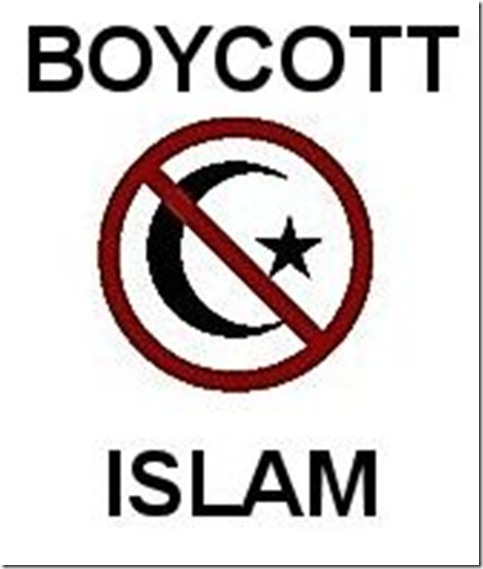
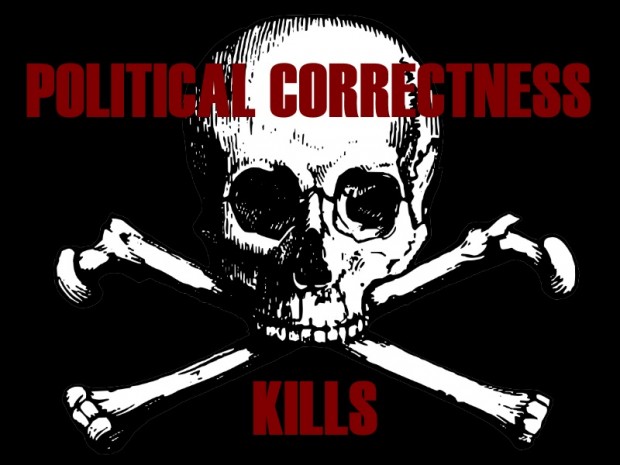


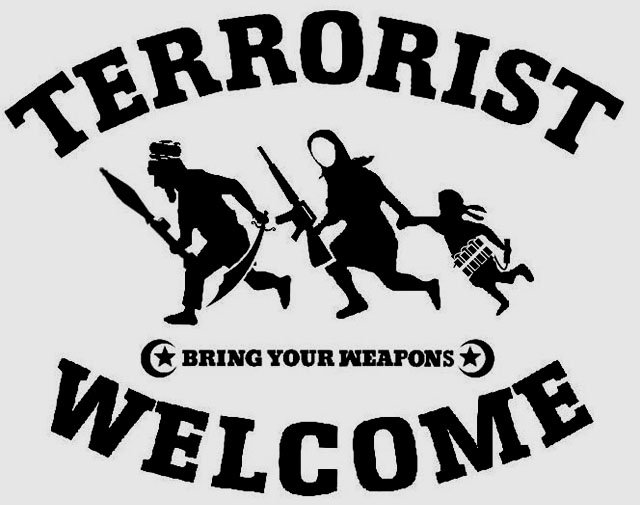
Dit had ik anders aangepakt: moet je eerst een account bij mega-gluurder google aanmaken
om het hoofdstuk te kunnen lezen. Ik ga het boek bestellen, lijkt me verstandiger. Die google-jongens kunnen van mij de boom in. Ik werk alleen met…
http://ixquick.com
Zou iedereen eens moeten doen. Is veiliger(+ handige proxy en telefoonzoeker ook nog) en effectiever.
LikeLike
Ben al bezig met iets anders! Eén moment geduld!! 😉
LikeLike
Brekend! Tweede KLOOTZAK die betrokken was bij de moord op die Haagse juwelier in Tblisi
opgepakt. http://www.telegraaf.nl/binnenland/12049413/__Tweede_juwelierkiller_opgepakt__.html
LikeLike
Perfect E.J.!
Zo is ’t beter. 🙂
LikeLike
Compliment idd.
LikeLike
Dank u heren. 😀
LikeLike
Marvelous…!!!
LikeLike
Goed en begrijpelijk geschreven, zonder hoogdravende taal: perfect! Lijste van R.Reagan’s quotes: http://thinkexist.com/quotes/with/keyword/ronald_reagan/
LikeLike
Let op: moslims proberen ook leuk te zijn. Trap er niet in!
http://nieuwsuur.nl/onderwerp/368798-humor-tegen-antiislamboodschap.html
Dit is HUMOR>>> http://tinyurl.com/7cvchwn
LikeLike
Brekend! Oplossing/islam-probleem binnen handbereik..!!! Je moet er wat moeite voor doen maar dan heb je ook wat.
http://www.telegraaf.nl/buitenland/12049847/__Uniek__zwart_gat__eet_ster_op___.html
LikeLike
@ G.Deckzeijl. Bedankt voor de link naar Nieuwsuur. Nu kan iedereen zien hoe ze het aanpakken bij de het Ministerie voor Propaganda in Hilversum.
LikeLike
@Vederso: om maar eens van Pim F. te spreken: at your service!
LikeLike
Brekend! Je kon er haast op wachten…
http://www.ad.nl/ad/nl/1040/Den-Haag/article/detail/3250097/2012/05/03/Verdachte-juweliermoord-huurt-advocaat-Enait-in.dhtml
LikeLike
Stakkers zijn ‘t, allemaal STAKKERS, sterker: ZZ Top-naäpers. En ze houden niet op te ZEIKEN door feiten met haatzaaien te verwarren. Neu, da’s geen taqiyya en dan ook nog hopen dat we erin trappen, zeker. NO GODDAMN WAY.
http://www.ad.nl/ad/nl/1012/Nederland/article/detail/3250079/2012/05/03/Moslims-ontsteld-door-boek-Wilders.dhtml
LikeLike
Off Topic
Zels Hatikva zou niet meer veilig zijn, een nieuwe versie gemaakt door dochter van Rabbi Shlomo Carlebach.
http://www.artsjournal.com/slippeddisc/2012/05/a-bi-national-anthem-for-the-state-of-israel.html?utm_source=feedburner&utm_medium=email&utm_campaign=Feed%3A+artsjournal%2FbQrW+%28Slipped+disc%29
LikeLike
http://www.theblaze.com/stories/beck-hosts-anti-islamist-dutch-mp-geert-wilders/
LikeLike
Zal Wilders wel over te spreken zijn, want islamieten zitten niet voor niets op hoge(bestuurlijke) posten.* Maar deze gaat dus weg. Bye bye, zwaai, zwaai..!!! Die gaat samen met haar nicht tevens ex-COA-chef een Turks bad beginnen, wedden..???
http://www.telegraaf.nl/binnenland/12053003/__Albayrak__PvdA__uit_de_politiek__.html
*Heeft alles te maken met HET PROJECT. http://tinyurl.com/5za2bg
LikeLike
http://www.artikel7.nu/immigratie-integratie/onze-rechtspraak-of-sharia-wat-zal-het-worden.html
LikeLike
http://www.artikel7.nu/politiek/ontwaakt-verworpenen-van-waarde.html
LikeLike
http://www.elsevier.nl/web/Opinie/Vrouw-van-de-Wereld/331964/Stuntelende-Albayrak-niet-geschikt-als-PvdAleider.htm
LikeLike
Arabist Hans Jansen over het nieuwe boek van Geert Wilder. Op Hoeiboei, 27 april 2012.
Citaat: Geert Wilders heeft ( onder meer, onder veel meer) in dit boek een indrukwekkende verzameling van feiten en citaten over de islam en de moslims verwerkt. Hij is bovendien bij geleerden in binnen en buitenland langs geweest, en heeft uiteindelijk een van de scherpste boeken geproduceerd die ooit over de islam zijn geschreven: Marked for death.The war against the West and me. Het boek richt zich tot U.
Hoop dat dit boek door veel mensen gelezen wordt.
LikeLike
Ik heb het boek net uit. Het is erg goed geschreven en goed gedocumenteerd. Wilders heeft zo te zien veel tijd en moeite genomen om een goed omlijnd verhaal te vertellen. Weliswaar is het in eerste instantie bestemd voor de Amerikaanse markt, het is beslist lezenswaardig voor Nederlanders zo ook voor andere werelddelen. Wilders heeft met dit boek zijn ‘testament’ geschreven. Daar bedoel ik mee, dat hij met dit boek het hele verhaal heeft verteld. Alles staat er in, zijn jeugd, zijn tienerjaren, als jong volwassene, en als politicus. Het is goed en overzichtelijk ingedeeld en blijft je als lezer boeien. Je blijft lezen kortom, en dat is iets dat nog wel eens te wensen over laat als het gaat om een loodzwaar onderwerp als islam. Het is tenslotte geen leuk verhaal met een positieve kantlijn. Het is de ijskoude realitet en dat wil nog wel eens afschrikken. Het is goed dat Wilders buitengewoon veel ruimte biedt aan de geschiedenis van de islam, en het tegelijkertijd zo leesbaar weet te houden dat je als lezer niet de draad kwijt raakt tussen alle kaliefen en emirs. Ook de uitgebreide index en notenverslag helpt voor de verdieping. Dat dit boek als een voetzoeker door de wereld zal gaan staat nu al vast. De O.I.C. heeft al alarm geslagen, dus dat is al binnen. Als de politieke moslims al zo snel alarm slaan, is het een goed teken. Dan is Wilders al geslaagd. Dit boek wordt de nieuwe Duivels Verzen, daar ben ik van overtuigd. Wilders is zijn vrijheid al kwijt, dus wat dat betreft kan het niet veel erger worden. Er is met het verschijnen van dit boek een nieuw hoofdstuk begonnen. Het gaat als kruipolie de hele wereld door. En wie schrijft, die weet waar het blijft tenslotte.
LikeLike